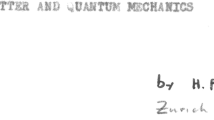Abstract
‘Śūnya’ is the Indic symbol that bridges the Brahman of Vedānta and the material universe. Śūnya denotes void as well as infinite space. Aryabhata employs ‘Śūnya’ to denote number zero. ‘Śūnya’ or ‘nothing’ is something that cannot be defined. While Vedanta denotes Brahman as formless energy or consciousness, quantum scientist defines the universe as an inseparable web of vibrating energy patterns in which no single particle has reality independent of the entirety. The entirety includes the observer too.
Our consciousness has emerged from cosmic consciousness and becomes a part of the universal whole, however separated in space. This is epitomized in the very first verse of Kenopaniṣad. At the quantum level of reality, the demarcation between the realms of phenomena seems to blur. There is obviously only one alternative, viz. the unification of mind and consciousness. Quantum vacuum (QV), Brahman and Śūnya (void) are all indescribable entities. Quantum scientists tell us that the only universal language is that which can be at the level of gauge bosons. Can human mind be trained to transmit and receive at the level of QV? Probably the answer lies in the development of our consciousness through the practice of Yoga and meditation or the practice of inward journey, advised by Sri Ramana Maharshi.
Access this chapter
Tax calculation will be finalised at checkout
Purchases are for personal use only
Similar content being viewed by others
Notes
- 1.
Greene (1999, p. 169).
- 2.
de Chardin (1956, p. 172).
References
Margenau H. Open vistas. Wood Bridge: Oxbow Press; 1983. p. 47.
Capra F. Tao of physics. Boston: Shambhala publications Inc.; 1999. p. 9.
Deussen P. The philosophy of upanishads. Edinburgh: T & T Clark Publications; 1993. p. 183.
Diarac PA. Principle of quantum mechanics. Oxford: Oxford University Press; 1947. p. 3.
Bohm D, Hiley B. The undivided universe. London: Routledge.
Greene B. The elegant universe. New York: WW Norton & Co; 1999. p. 357–8.
Wigner E. Quantum theory and measurement. Princeton: Princeton University Press; 1983. p. 173–4.
Penrose R. Shadows of the mind. New York: Oxford University Press; 1989. p. 448.
Penrose R. Shadows of the mind. New York: Oxford University Press; 1989. p. 8.
Eddington AS. Philosophy of physical science. New York: Mc-Millan Co.; 1939. p. 151.
de Chardin T. Heart of matter. London: Collins; 1978, p. 25.
de Chardin T. Mon universe. Paris: Editions du Seuil; 1965. p. 74.
de Chardin T. La Place de l-hommeDans la Nature. Paris: Editions du Seuil; 1956. p. 48.
Hawking S. The universe in a nutshell. New York: Bantam Book; 2001. p. 86–7.
Wheeler J. At home in the universe. New York: Springer-Verlag; 1996. p. 44.
Select Bibliography
Bag AK, Sarma SR. The concept of Śūnya. New Delhi: Aryan Book International.
Datta B, Singh AN. The history of Hindu mathematics. New Delhi: Bharatiya Kalaprakashan; 2004.
Joseph G.G., The crest of the peacock: Non-European roots of mathematics, Princeton University Press, Princeton.
Kaplan R, Lane A. The nothing that is: a natural history of zero. London: The Penguin Press; 1990.
Plofkin K. Mathematics in India. Princeton: Princeton University Press; 2008.
Radhakrishnan S. Indian philosophy. London Ltd.: George Allen & Unwin; 1948.
Rotman B. Signifying nothing, the semiotics of Zen. London, Palgrave, Mac Milan; 1987.
Seife C. Zero: the biography of a dangerous idea. London: Souvenir Press; 2000.
Dawkins R. The blind watchmaker. New York: Noon & Comp; 1986.
Eddington AS. The nature of the physical world. New York: Macmillan Comp; 1929.
Hiesenberg W. Philosophical problems of quantum physics. Woodbridge: Ox Bow Press; 1952.
Hiesenberg W. Physics and philosophy. New York: HarperTorch books; 1962.
Kafatos M, Nadeau R. The conscious universe. New York: Springer Verlag; 1990.
Shedrake R. The presence of the past. Rochester: Park Street Press; 1988.
Author information
Authors and Affiliations
Editor information
Editors and Affiliations
Rights and permissions
Copyright information
© 2019 Springer Nature Singapore Pte Ltd.
About this chapter
Cite this chapter
Rammohan, S. (2019). Quantum Physics, Consciousness and Śūnya. In: Bhatt, S.R. (eds) Quantum Reality and Theory of Śūnya. Springer, Singapore. https://doi.org/10.1007/978-981-13-1957-0_14
Download citation
DOI: https://doi.org/10.1007/978-981-13-1957-0_14
Published:
Publisher Name: Springer, Singapore
Print ISBN: 978-981-13-1956-3
Online ISBN: 978-981-13-1957-0
eBook Packages: Religion and PhilosophyPhilosophy and Religion (R0)




